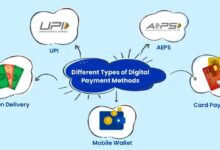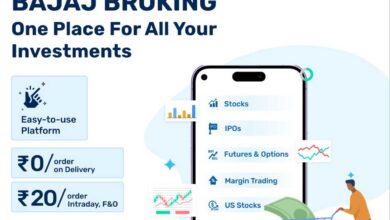Have you been thinking about creating an online course for a long time? Or have you recently found out about the concept and found it cool? But you don’t know what to consider if you want to create your online course, where you start, and how to sell your course.
Then I would like to read on because in this article I will show you the seven steps to your successful online course so that you can get started right away.
What is an online course and why should I create one?

The name online course says everything: it is a course that takes place online.
This also results in the first advantage: You don’t have to organize the location and your customers: Inside do not have to travel anywhere.
You can also learn at any time (even late in the evening when the children are in bed or the morning with a cup of coffee on the balcony). This creates flexibility on both sides because you do not have to make appointments.
You can scale an online course wonderfully, i.e. support many more people simultaneously. This is how you escape the time-against-money trap.
: An online course is an additional mainstay for you and brings financial security to your business.
Requirements for creating an online course yourself
Everyone can create an online course. All you need are:
- An at least fundamental understanding of your positioning. It is okay if you are still unsure in some places – your positioning will probably change and refine all over time anyway – but you should at least have an idea of what the topic of your business is, and who is your desired customer: inside And with which challenges you want to help them.
- A first small community. Building a community takes time and patience and you will never finish it. You also do not need 5,000 Instagram followers: or newsletter subscribers: inside to sell your course. But without a community, you will still have a hard time seeing: the win inside. Therefore: start the community building as early as possible.
- Internet access and tools that you need for production. This can vary depending on what course you want to create. For a video course, you logically need a good camera and a microphone, text software for a text-based course, and so on.
That was it. If you have a rough direction for your business in your head, the first members in your community, and a camera on your computer, you can get started.
Read Also: How Online Learning is Making Education More Accessible and Affordable
Create and sell an online course: This is how you proceed
Designing an online course can quickly be overwhelming if you have never done it. With a clear plan, you make the work a lot easier. Let’s take a look at the steps.
Excursus:
Online courses can take place on a different scale. Roughly you can distinguish 3 options that courses can usually be grasped: if it is about a starter course that gives an overview or an introduction to your topic, with which your customer can start: inside your topic and first small Outstanding results. Or is it a course that steps deeper into a certain sub-area or goes very deep in a sub-area of your topic (Amy Porterfield calls this a “Spotlight course”)?
The third option is your signature course. The course or the program you want to stand for, which includes your framework, and your method. A signature course is your complete system. It is the most comprehensive of all three types of course. A signature course is specific and detailed and includes the entire framework from start to finish and leads to a complete transformation.
Often, courses differ in a long time (from one week to one year, for example) and the form and intensity of the accompaniment (if it is a self-learning course, there are calls or an accompanying group, forum, or the like and a lot of hybrid models ).
But the steps are the same for everyone:
1. Find the course idea
First of all, you should consider the topic on which you want to offer an online course.
The perfect topic is made up of three areas:
- Your passion: what are you burning for? Which topic could you talk about for at least half an hour without preparation?
- Your skills and knowledge: What can or do you know particularly well? In which area did you complete training or further training or acquire expertise privately? What problems do others in your environment often ask for help with?
- Your target group: Who exactly are your desired customers: inside? For what questions and challenges do you look for a solution?
Many self-employed people tend to pack too much in their first course. You would like to convey everything you know – overwhelm your participants: but inside with it.
Therefore, when choosing your topic, be as concrete as possible and determine a clear, best measurable goal that your customer should reach with the course. All content will be based on this goal later.
An example: “My customers: should be less stressed on the inside and go off earlier” is relatively unspecific. Because each: R feels something different than stress and earlier after work could also be three minutes.
It would be better: “My customers: Inside should not work ten hours or more a day, but can take the end of the day after just six hours”.
A market analysis also makes sense: look at what others offer for courses in your subject area and what goals you can achieve with your customers: inside. It is easiest for you if you find a niche that is not yet treated so often. But this is not a must, because there is usually a lot of offer that there is high demand. You then need a stronger brand and better marketing than in the niche.
See Also: How to Earn Money with YouTube
2. Plan the format of the course
If you know which specific goal you want to know: inside, you can think about the format of your course.
The first question is: Would you like to offer a self-learning course in which the participants are: on their own? Or do you want to accompany them, for example through a question and answer session, coaching, or a community for exchange and feedback?
The second question is: How extensive should the course be? How much time do your customers need: inside until they are at their destination?
In the beginning, it is easier to produce a small, manageable online course. This increases the likelihood that you will not stop in the middle and your course will be ready.
Finally, the third question: How do you want to raise your course in terms of content?
For example, you can create a video course or deliver an email course. Audios, PDF documents, workbooks, checklists, and other formats are also possible. Which medium fits? Exclusive audio or email course can also be a good idea.
Depending on the topic, a different combination can be useful. For example, if you offer a watercolor course, it will help the participants: inside, to be able to follow video instructions. If you create a course on the relationship with relationships, perhaps audio files make sense – parents can also hear them about work while cooking or on their way from the daycare center.
Then a distinction is made between different learning types (IVAN, learning types according to Frederic Vester):
- The auditory learning type: learns through hearing, listening, discussion
- The visual type of learning – learns through reading, showing images, video
- The haptic-kinesthetic (also motor) learning type: learns through feelings, trying out, application, etc.
- The cognitive-intellectual learning type: learns through knowledge, thinking
- The successors of Vesters, based on his ideas, have described a fifth learning type:
- The communicative learning type: learns through speaking, and exchanging with others.
If you want to pick up all types of learning or more, it is advisable to offer video, audio, and text and, if necessary, group exchange or other communicative elements.
3. Structure the content of the online course
Next, you determine the content of your online course.
List first list all the findings, skills, and to-dos that need to be made: inside to achieve the price target. Then you bring them into a logical order.
You can divide the course into several modules and in turn into lessons.
Example: If I would offer a course through online courses, “Finding the Course idea” could be a module and “Planning the course” another.
See Also: 200+ Catchy and Creative YouTube Channel Name Ideas in 2024
4. Create content
As soon as you have clarity about the content of your course and a common thread, you can go to production. So now you pick up videos and/or audio and create workbooks, checklists, and whatever your announcement: otherwise needs.
5. Set up an online course in the software
If all content is, you just have to put them together. If it is a very small course, you can deliver it well via email automation. Links to videos can also be inserted into emails.
However, it is clearer for your customers: However, it is inside if you host the content in a course area. You can set up a learning area directly on your website and link it to a payment provider such as Digistore or Copecart.
Alternatively, with Elopage, Coachannel, Coach, Thinkific, Teachable, and many other software, there is also the option of choosing an external course platform.
The best way to think about what you want for your course and what functions you need. Then look at the different platforms and choose those that best meet your requirements.
6. Create a landing page
Juhu, your course is standing! Now it’s time to sell. To do this, you need a landing page that introduces your product, announced: inside shows what you can achieve through the course and answers all questions you could have.
Feel free to look back to the questions you answered for you in Step 1. You can now use it to write a convincing text and get the content of your online course in a nutshell.
Tip: Maybe you sometimes get online courses yourself. Look at what the Landing Pages look like for these courses and write down what you like. From this, you can draw inspiration for your page.
Read Also: 5 Crucial Trust Elements That Every Landing Page Needs
If you have a high and e.g. daily social media presence and mainly sell there and via posts and stories, then you may not need a big landing page because your followers already know what you sell and only a booking button or a PayPal Link needs. That is again a question of the business model. A landing page should be useful for most.
7. Rant regular
Many self-employed think, they create an online course, put it on their website, and now have a convenient passive income. Unfortunately, it is not like that. Functioning automated and evergreen processes usually need a lot to try out and optimize as well as high traffic on your course.
In most cases, you should at least launch it to sell your course. Not just once, but again and again.
Create online course: 6 tips from practice
If you follow the instructions step by step and stay on, even if the motivation may leave you, you will have created your first online course. So that he becomes successful, I still have five tips for you:
- Choose a short, meaningful name for your course. The best way to see from the title is to see what your course is about. Note: In this case, it is better than creative.
- Choose a price that corresponds to the benefits of the course participants. Of course, you can also look around in your industry which prices are on others. Ultimately, however, he should fit you and your brand. The more urgent the problem that the online course for your announcement: the inside and the more changes with them, the higher the price can be.
- Depending on the topic and target group, it can make sense to avoid long videos and rather divide your content into small snacks. Especially with preliminary price videos, it often makes sense not to make the videos for more than 10-15 minutes.
- Make sure that you only talk as much as necessary in your course and focus more on the implementation. Only if your announcement: is implemented inside you get the desired result and only then are you satisfied, buy again and recommend you.
- See how it works for you and your target group well. It can be very useful to record the videos on the go in the first round or simply keep your content live. Maybe you will simply use the recording or you will then pick it up compressed.
- Done is Better than Perfect: Don’t keep up with videos for too long. You will further improve your course with every round. Experiments are allowed!
Conclusion:
Creating and selling an online course means some effort for you: From the idea of planning and producing the content and writing a landing page to the launch, you have a lot to research, consider, and naturally implement.
You can reduce the mental hurdles for yourself if you start with a short course. Later you can expand it or design an additional, more extensive course.
Many roads lead to Rome. For some, they are online courses, for others they other another scalable online product or first a small workshop or mini course.







